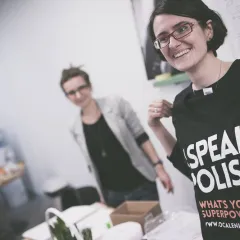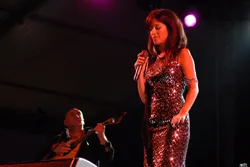I was asked to write a few words about Fado. This is a very dear subject to me, I do love fado.
Fado is a typical Portuguese song. It first appeared in early XIX century. It has Portuguese, and African influences but also Arabic. The Arabic influence is not in the kind of music, but on the way of singing which has some characteristics that lead us there. Still, this is a very weak influence.
The oldest references to Fado say that the sailors started to sing it and that it first came from sailor songs. Still is a song from Lisbon mostly, only much later the rest of the country got to know this particular song. The first know famous singer of fado was Maria Severa, a Gipsy woman that was a prostitute. She used to sing the Lisbon district of Mouraria, in the Rua do Capelão (name of the street) and was the lover of a famous noble. This romance became a myth after several songs that mention it.
Fado started to be sung in taverns where nobles, artists, common people and foreigners started to get together to listen to Fado Vádio, not professional. Fado is played with classic guitar, Bass and Portuguese guitar, which has 12 strings.
There is also another kind of Fado, less popular, which is Fado de Coimbra (another city) but the way of singing is totally different and the instruments are tuned and played in a totally different way.
Much more could be said about this popular song but most of all, I can say that the person that made it famous was the greatest singer of all times, Amália Rodrigues. She brought to Fado new and old together, she made it hers with new ways of singing it and starting to sing the greatest Portuguese poets like Camões.
I have been watching lately that people became, in Poland, like in other countries, more and more interested in Fado and it’s great to watch so many shows in many Polish cities. It is wonderful to see the Sala Kongresowa completely full to watch Mariza who is a very popular singer. But it might be even more impressive to see how many people go to listen other singers like Mísia, Ana Moura or even Camané. They don’t sell as many CDs in Poland but they certainly are great. It is also great to see that in Poland we can buy CDs from all these singers, from Amália to Ana Moura. There’s a new generation of singers that are absolutely great.
I can make a list of singers but it would be long so I chose only a few names for a good start:
Carlos do Carmo, Mísia, Ana Moura, Mariza, Camané, Mafalda Arnauth, Katia Guerreiro, Joana Amendoeira, Carminho, Hélder Moutinho, João Moutinho and the great Ricardo Ribeiro.
Fado is mostly known outside of Portugal when sung by women, but those that haven’t heard sung by men… they have to listen to Camané.
The fact that Fado is sung in Portuguese, a language spoken in all continents by about 250 million people give to the sounds something very characteristic that has to do with the language itself: the African, Southern American and Asian influence. It’s a great sound and language heritage.
Fado is a very deep and nostalgic song. Lately we have been listening to enthusiast saying that Fado is also a happy song. Like trying to contradict the people that don’t want to listen to it because it is sad... Well, there are happy Fados, but most of all it is a very sad song. Really deep and real. It’s not only a song about 'SAUDADE', the Portuguese word that means longing, nostalgia, melancholy or missing something or someone, it’s also a song of anything – places, streets, wind, smell, steps.. anything that somehow might make a poetic difference. The rimes are not easy rimes, they are rather extremely sophisticated. Fado is interesting because of that, it joins popular and sophisticated all together.
One thing is very important, Fado has to be listened by anyone at least once in their lives. You might not like it… it might disturb you too much, but you will be glad to know that something extraordinary like Fado exists.
Text by Gonçalo Franco










































